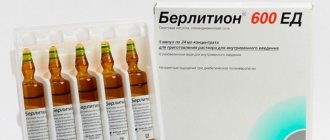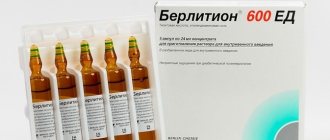Pharmacological properties of the drug Zometa
Zoledronic acid belongs to a new class of highly potent bisphosphonates that have selective effects on bone tissue and is one of the most potent inhibitors of bone resorption. The selective effects of bisphosphonates on bone are due to their high affinity for mineralized bone, but the precise molecular mechanism responsible for the inhibition of osteoclast activity remains unclear. In animal studies, zoledronic acid has been shown to inhibit bone resorption without adversely affecting bone formation, mineralization, or mechanical properties. In addition to inhibiting osteoclastic bone resorption, zoledronic acid has certain antitumor properties that increase the effectiveness of the treatment of metastatic bone lesions. In vivo - inhibition of osteoclastic bone resorption, which affects the structure of the microcrystalline matrix of bone, reduces tumor growth, reduces antiangiogenic and analgesic effects. In vitro - inhibition of osteoblastic proliferation, cytostatic and proapoptostatic effect on tumor cells, synergistic cytostatic effect with other antitumor drugs, anti-adhesive and anti-invasive effect. The pharmacokinetic parameters of zoledronic acid administered as a single infusion over 5 and 15 minutes at doses of 2, 4, 8 and 16 mg in 64 patients with bone metastases were not dose dependent. After initiation of zoledronic acid infusion, plasma concentrations of the drug increased rapidly, reaching a peak at the end of the infusion, then rapidly decreased to ≤10% of peak at 4 hours and ≤1% of peak at 24 hours, followed by a prolonged period of very low concentrations not exceeding 0.1%. peak until the second infusion of the drug on the 28th day. IV administered zoledronic acid is eliminated in three phases: rapid two-phase elimination from the systemic circulation with a half-life of t1/2α of 0.24 and t1/2β of 1.87 hours, followed by a long-term elimination phase with a final half-life of t1/2γ of 146 hours. After use After repeated doses of this drug, used every 28 days, its accumulation in the blood plasma was not observed. Zoledronic acid is not metabolized and is excreted unchanged through the kidneys. During the first 24 hours, 39±16% of the administered dose is excreted in the urine, while the remainder is predominantly bound to bone tissue. Zoledronic acid is then slowly released back from bone tissue into the systemic circulation and excreted by the kidneys. The total plasma clearance of the drug is 5.04 ± 2.5 l/h, does not depend on the dose of the drug, gender, age, race and body weight of the patient. Increasing the infusion duration from 5 to 15 minutes resulted in a 30% decrease in zoledronic acid blood concentration at the end of infusion but did not affect AUC. There are no data on the pharmacokinetics of zoledronic acid in patients with hypercalcemia and liver failure. According to data obtained in vitro , zoledronic acid does not inhibit the human P450 enzyme and does not undergo biotransformation; According to experimental studies conducted in animals, less than 3% of the administered dose is excreted in the feces, suggesting that the state of liver function does not significantly affect the pharmacokinetics of zoledronic acid. Zoledronic acid has no affinity for blood cells. Plasma protein binding is low (about 56%) and does not depend on the concentration of the drug in the blood plasma. Renal clearance of zoledronic acid correlates with creatinine clearance, renal clearance is 75±33% of creatinine clearance. The results of the population analysis showed that in patients with creatinine clearance of 20 ml/min (ARC) or 50 ml/min (moderate deficiency), the relative clearance of zoledronate was 37 or 72%, respectively. There are no data on patients with acute renal failure (≤30 ml/min).
pharmachologic effect
The active ingredient of the drug is a highly effective bisphosphonate with a selective effect on bone. By acting on osteoclasts, it inhibits bone resorption.
The selective effect of bisphosphonates on bone tissue is based on their high affinity directly for mineralized bone tissue. At the moment, the exact molecular mechanism that provides inhibition of osteoclast activity remains unclear.
Zoledronic acid does not have any undesirable effects directly on the mineralization, formation, or mechanical properties of bone. Zoledronic acid, in addition to its inhibitory effect directly on bone tissue resorption, is endowed with antitumor properties, ensuring the effectiveness of the drug in case of bone metastases.
By inhibiting proliferation and inducing apoptosis, zoledronic acid provides an antitumor effect to human myeloma cells and breast cancer, and also reduces the penetration of breast cancer cells through the extracellular matrix, which indicates antimetastatic properties. Zoledronic acid is also characterized by antiangiogenic effects.
Zometa for breast and prostate cancer and other tumors with metastatic bone lesions prevents the development of pathological fractures, compression of the spinal cord, significantly reduces the need for surgical interventions and radiation therapy, and reduces tumor hypercalcemia.
The properties of the drug are to restrain the progression of the pain syndrome itself.
The therapeutic effect is less pronounced in individuals with osteoblastic lesions than in those with osteolytic ones. The effectiveness of 4 mg of Zometa for breast cancer and multiple myeloma in the presence of at least one bone lesion is comparable to 90 mg of pamidronate.
The effect of Zometa in tumor hypercalcemia is characterized by a decrease in serum calcium levels and excretion of calcium in the urine. The period of time required to normalize calcium levels is 4 days. Calcium concentration stabilizes by day 10 in 87-88% of patients.
The average time to relapse is 30-40 days. There were no particularly significant differences between the effectiveness of Zometa doses of 4 mg and 8 mg in the treatment of hypercalcemia.
Indications for use of the drug Zometa
Hypercalcemia caused by a malignant tumor; prevention of symptoms associated with bone tissue (prevention of pathological bone fractures, spinal compression, complications after surgery and radiation therapy, hypercalcemia) in patients with malignant neoplasms involving bones. Prevention of bone loss and bone fractures in postmenopausal women with early stage breast cancer when treated with aromatase inhibitors (AIs).
Use of Zometa
The drug is used intravenously. Prevention of symptoms associated with bone damage in patients with malignant neoplasms Adults and elderly patients. The recommended dose for the prevention of bone symptoms in patients with malignant neoplasms with bone damage is 4 mg zoledronic acid. The concentrate should be diluted in 100 ml of 0.9% sodium chloride solution or 5% dextrose solution, which is given as a one-time 15-minute IV infusion once every 3-4 weeks. Patients also need oral calcium supplementation at a dose of 500 mg and 400 IU of vitamin D daily. Prevention of bone loss and bone fractures in postmenopausal women with early stage breast cancer when treated with aromatase inhibitors (AIs) For adults and elderly patients, the recommended dose for this indication is 4 mg zoledronic acid every 6 months. The concentrate should be diluted in 100 ml of 0.9% sodium chloride solution or 5% dextrose solution and administered as a one-time 15-minute IV infusion. Patients also need oral calcium supplementation at a dose of 500 mg and 400 IU of vitamin D daily. Treatment of hypercalcemia associated with malignancy Adults and elderly patients. For hypercalcemia (serum calcium concentration corrected by albumin level ≥12.0 mg/dL or 3.0 mmol/L), the recommended dose of the drug is 4 mg of zoledronic acid. The concentrate should be diluted in 100 ml of 0.9% sodium chloride solution or 5% glucose solution, which is administered as a one-time 15-minute IV infusion. Before administering Zometa, the patient's hydration status should be assessed. Zometa infusion is carried out provided there are no signs of dehydration in the patient. Patients with impaired renal function Hypercalcemia associated with malignancy. Treatment with Zometa in patients with hypercalcemia and severe renal impairment is possible only after assessing the risks and benefits of treatment. In clinical studies, patients with a serum creatinine level of 400 μmol/L or 4.5 mg/dL were excluded. Patients with serum creatinine levels ≤400 µmol/L or ≤4.5 mg/dL do not require a special dosage regimen. Prevention of symptoms associated with bone damage in patients with malignant neoplasms and prevention of bone loss and bone fractures in women with early stage postmenopausal breast cancer when treated with aromatase inhibitors (AIs) At the beginning of treatment with Zometa in patients with multiple myeloma or metastatic disease bone due to a solid tumor, and in postmenopausal women with early stage breast cancer treated with aromatase inhibitors (AIs), serum creatinine levels and creatinine clearance should be determined. Zometa is not recommended for patients with severe renal impairment (creatinine clearance ≤30 ml/min). For patients in these categories with mild or moderate renal dysfunction before starting therapy (creatinine clearance 30–60 ml/min), the following doses of Zometa are recommended.
Baseline creatinine clearance (ml/min) | Recommended dose of Zometa (mg) |
| 60 | 4,0 |
| 50–60 | 3,5* |
| 40–49 | 3,3* |
| 30–39 | 3,0* |
*Doses are calculated assuming a given AUC=0.66 mg•h/l (creatinine clearance 75 ml/min). Dose reductions for patients with impaired renal function are allowed to achieve the same AUC value as in patients with a creatinine clearance of 75 ml/min.
Once therapy is initiated, serum creatinine levels should be measured before each dose of Zometa and if renal function is impaired, treatment should be discontinued. In clinical trials, renal impairment was defined as follows:
- for patients with a normal baseline serum creatinine level (≤1.4 mg/dL or ≤124 µmol/L), an increase of ≥0.5 mg/dL or 44 µmol/L;
- for patients with an altered baseline serum creatinine level (1.4 mg/dL or 124 µmol/L), an increase of ≥1.0 mg/dL or 88 µmol/L.
Zometa therapy should be resumed at the same dose as before treatment was interrupted. Instructions for preparing reduced doses of Zometa Take the appropriate volume of liquid concentrate needed:
- 4.4 ml for a dose of 3.5 mg;
- 4.1 ml for a dose of 3.3 mg;
- 3.8 ml for a 3.0 mg dose.
The taken amount of liquid concentrate should be diluted in 100 ml of 0.9% sodium chloride solution or 5% dextrose solution. The dose should be administered as a single intravenous infusion over at least 15 minutes. Before using the cooled solution, you must first let it settle at room temperature.
Composition, release form and packaging
The drug Zometa is available in several pharmaceutical forms:
- In the form of a concentrate, as a basis for the production of infusion solutions, a colorless transparent liquid.
Active components: in 1 ml (1 bottle) – 4.264 mg of zoledronic acid monohydrate, which is similar to the 4 mg content of anhydrous zoledronic acid.
Additional components: nitrogen, sodium citrate, mannitol, water for injection.
In a cardboard package - 1 colorless plastic bottle with a volume of 5 ml.
- In the form of a solution for infusion, a colorless transparent liquid.
Active components: in 1 bottle of solution – 4 mg of zoledronic acid monohydrate.
Additional components: sodium citrate dihydrate, mannitol, water for injection.
In a cardboard package - 1 plastic bottle with a volume of 100 ml.
Side effects of Zometa
Classified according to the frequency of occurrence of their manifestations: very often (≥1/10), often (≥1/100, ≤1/10), sometimes (≥1/1000, ≤1/100), rarely (≥1/10,000, ≤1/1000), very rare (≤1/10,000), including isolated cases. From the blood and lymphatic system: often - anemia; sometimes - thrombocytopenia, leukopenia; rarely - pancytopenia. From the nervous system: often - headache; sometimes - dizziness, paresthesia, taste disturbances, hypoesthesia, hyperesthesia, tremor. From the mental side: sometimes - agitation, sleep disturbance; rarely - confusion. From the organs of vision: often - conjunctivitis; sometimes - blurred vision; very rarely - uveitis, episcleritis. From the gastrointestinal tract: often - nausea, vomiting, anorexia; sometimes - diarrhea, constipation, abdominal pain, dyspepsia, stomatitis, dry mouth. From the respiratory system: sometimes - dyspnea, cough. From the skin and subcutaneous tissues: sometimes - itching, skin rash (including erythematous and macular), increased sweating. From the musculoskeletal system and connective tissue: often - bone pain, myalgia, arthralgia, generalized pain; sometimes - muscle cramps. From the cardiovascular system: sometimes - hypertension (arterial hypertension), hypotension; rarely - bradycardia. From the kidneys and genitourinary system : often - renal disorders; sometimes - acute renal failure, hematuria, proteinuria. From the immune system: sometimes - hypersensitivity reactions; rarely - angioedema. General disorders and reactions at the injection site: often - fever, flu-like condition (including fatigue, chills, malaise and flushing); rarely - asthenia, peripheral edema, reactions at the injection site (including pain, irritation, swelling, hardening), chest pain, weight gain. From laboratory parameters: very often - hypophosphatemia; often - increased levels of creatinine and urea in the blood, hypocalcemia; sometimes - hypomagnesemia, hypokalemia; rarely - hyperkalemia, hypernatremia. Although bronchoconstriction has not been observed with Zometa, the use of other bisphosphonates in patients with acetylsalicylic acid-sensitive asthma has been associated with bronchoconstriction. Post-marketing observations. Rare cases of osteonecrosis (primarily of the jaw) have been reported in patients receiving bisphosphonate therapy, including Zometa. Many patients had signs of local infection, including osteomyelitis, and most reports were of oncology patients in whom complications developed after tooth extraction or other dental surgery. Osteonecrosis of the jaws was caused by multiple documented risk factors, including a confirmed diagnosis of cancer, concomitant therapies (chemotherapy, radiation, corticosteroid therapy), and other pathological conditions (eg, anemia, coagulopathies, infection, pre-existing oral disease). Although a causal relationship cannot be established, dental surgery should be avoided as recovery may be prolonged. In very rare cases, hypotension has led to syncope or vascular insufficiency, mainly in patients with underlying risk factors.
Side effects
Undesirable reactions (side effects) from the body may appear with long-term use of the drug Zometa. As a rule, they are weakly expressed and have a transient direction. Side effects develop in the same way as when taking other bisphosphonates:
- After intravenous administration of the drug, 9% of patients develop a flu-like condition. In addition, bone pain occurs, fever, general weakness, and chills appear.
- In 20% of patients, there is a decrease in renal calcium excretion and a sharp decrease in phosphorus concentration. This condition occurs without visible symptoms. And only in 3% of people, a decrease in calcium leads to hypocalcemia, but this also does not manifest itself clinically.
- A small proportion of patients complained of arthralgia and myalgia.
- After an infusion of Zometa, some patients feel nausea and sometimes vomit. More rare manifestations from the gastrointestinal tract are constipation, diarrhea, dyspeptic conditions, stomatitis and dry mouth.
- Swelling, redness, and soreness may develop locally, but this happens only in 1% of patients. The same 1% of patients experienced itching and rash on the skin, as well as conjunctivitis, and in rare cases blurred vision was observed.
- Another side effect of Zometa 4 mg is the development of anorexia. It develops in 1.5% of people.
- Many patients felt a deterioration in kidney function while taking Zometa, but in this case it is worth considering other factors that predispose to organ dysfunction.
- Possible decrease in hemoglobin. The hematopoietic organs can also be damaged during the use of Zometa, which is manifested by anemia, thrombocytopenia, leukopenia and, in rare cases, pancytopenia.
- From the side of the peripheral and central nervous system, pain in the head, dizziness develops, hypoesthesia or hyperesthesia appears, taste sensations change, sleep is disturbed, an anxious feeling, and tremor appear. In rare cases, consciousness becomes confused. Shortness of breath and cough, joint pain and muscle cramps appear.
- On the part of the heart and blood vessels, an increase or decrease in blood pressure is sometimes recorded, and in rare cases bradycardia develops.
Special instructions for the use of Zometa
Patients should be hydrated before Zometa is prescribed. Standard metabolic parameters associated with hypercalcemia, such as serum levels of calcium, phosphate and magnesium, and creatinine, should be carefully monitored after initiation of Zometa therapy. If hypocalcemia, hypophosphatemia, or hypomagnesemia occurs, short-term adjunctive therapy may be necessary. Untreated patients with hypercalcemia have some degree of renal impairment, so careful monitoring of renal function is necessary. Patients with tumor-induced hypercalcemia and evidence of deteriorating renal function should be carefully evaluated to determine whether the potential benefits of long-term therapy with Zometa outweigh the potential risks. When deciding to treat patients with bone metastases to prevent skeletal events, it should be taken into account that the onset of effect is achieved after 2–3 months. There have been reports of renal dysfunction associated with bisphosphonates. Factors that increase the possibility of renal impairment include: dehydration, pre-existing renal impairment, repeated use of Zometa or other bisphosphonates, and use of nephrotoxic agents or administration of infusions shorter than currently recommended. Although the risk is reduced when Zometa is administered at a dose of 4 mg over at least 15 minutes, deterioration of kidney function is possible. Increases in serum creatinine levels have also been observed in some patients chronically taking Zometa at recommended doses to prevent the onset of spinal symptoms. Patients should have their serum creatinine levels assessed before each dose of Zometa. After initiation of treatment in patients with bone metastases and postmenopausal women with early stage breast cancer, lower doses of Zometa are recommended during treatment with aromatase inhibitors (AIs) to prevent bone loss and bone fractures with mild to moderate renal impairment. In patients who experience deterioration in renal function during treatment, Zometa should only be resumed when creatinine levels return to within 10% of baseline values. Due to the potential effects of bisphosphonates, including Zometa, on renal function due to the lack of extensive clinical safety data in patients with severe renal impairment (defined in clinical trials as serum creatinine ≥400 µmol/L or ≥4. 5 mg/dL for patients with cancer-induced hypercalcemia and serum creatinine ≥265 µmol/L or ≥3.0 mg/dL for patients with bone metastases and in postmenopausal women with early stage breast cancer during inhibitor treatment aromatase (AIs) to prevent bone loss and bone fractures, respectively), at the beginning of treatment and in the presence of only limited pharmacokinetic data in patients with severe renal impairment (creatinine clearance ≤30 ml/min), use of the drug is not recommended. There are no specific recommendations for patients with severe hepatic impairment because only limited clinical data are available. Overhydration should be avoided in patients at risk of developing heart failure. Osteonecrosis of the jaw has been reported in cancer patients receiving treatment regimens containing bisphosphonates. Many of these patients received chemotherapy and corticosteroids. The majority of recorded cases were associated with dental procedures (tooth extraction). Many had signs of local infection, including osteomyelitis. In patients with associated risk factors (eg, cancer, chemotherapy, corticosteroid therapy, poor oral hygiene), an oral examination with appropriate preventive dentistry should be performed before initiating bisphosphonate treatment. During therapy, these patients should avoid invasive dental procedures if possible. In patients who develop osteonecrosis of the jaw during bisphosphonate therapy, dental surgery may worsen the condition. There are no data in patients requiring dental procedures to suggest whether stopping bisphosphonate treatment reduces the risk of developing osteonecrosis of the jaw. The attending physician, making a clinical assessment, should be guided by the management plan for each patient, based on an individual assessment of benefit/risk. In post-marketing studies, acute, sometimes disabling bone, joint and/or muscle pain has been reported in patients taking bisphosphonates. However, such reports were isolated. The time to onset of symptoms varied from one day to several months from the start of treatment. Most patients experienced a decrease in symptoms after cessation of treatment. In this category of patients, relapse of symptoms was noted if treatment was restarted with the same drug or a different bisphosphonate. During pregnancy and breastfeeding. The drug is contraindicated during pregnancy and breastfeeding. Children. There is no experience with the use of the drug in children, so the drug should not be used in pediatric practice. Impact on the ability to drive vehicles and operate machinery. No studies have been conducted on the effect of the drug on the ability to drive vehicles and operate complex machinery, but if side effects from the central nervous system occur, such activities should be avoided. Incompatibility. In order to prevent incompatibility, Zometa concentrate must be diluted in a sterile 0.9% sodium chloride solution or 5% dextrose solution. The drug should not be mixed with solutions containing calcium, for example Ringer's solution. Studies with glass vials, as well as several types of infusion bags and infusion sets made of polyvinyl chloride, polyethylene and polypropylene (prefilled with 0.9% sodium chloride or 5% dextrose solution) show no incompatibility with the above packaging materials.
Cost and patient opinion
Reviews from patients about this medicine are mixed, because... in advanced cases, treatment sometimes does not help. But if the drug is prescribed on time and all conditions for its use are met, then many patients are satisfied with the result.
The drug is not in short supply and is sold in most pharmacies with a doctor's prescription. The price of the medicine is 10,642 rubles.
It should be noted once again that the patient should under no circumstances self-medicate. The decision about whether to use this drug or not should be made only by a doctor.
Zometa drug interactions
In clinical studies, other frequently used drugs were prescribed simultaneously with Zometa - antitumor drugs, diuretics, antibiotics, analgesics. No clinically significant interactions were noted. According to data obtained in in vitro , zoledronic acid has no significant binding to plasma proteins and does not inhibit the P450 enzyme. However, specific clinical studies examining drug interactions have not been conducted. Caution is recommended during concomitant use of bisphosphonates and aminoglycosides as both drugs may have additive effects on serum calcium concentrations, which may result in serum calcium levels remaining depressed for longer than required. Caution should be exercised when prescribing Zometa and other potentially nephrotoxic drugs. The possibility of developing hypomagnesemia should also be kept in mind. In patients with multiple myeloma, there may be a risk of renal impairment when administered concomitantly with intravenous bisphosphonates, such as Zometa, and in combination with thalidomide.
Storage conditions for Zometa
Store bottles at a temperature not exceeding 30 °C. After opening the bottle when preparing the solution, after complete dilution in 100 ml of isotonic sodium chloride solution or 5% dextrose solution, the drug is stable for 24 hours at a temperature of 2–8 °C. After aseptic dissolution and dilution, it is advisable to use the ready-to-use drug immediately. The total time from the moment of dilution, storage in the refrigerator (at a temperature of 2–8 ° C) and until the end of administration should not exceed 24 hours.
List of pharmacies where you can buy Zometa:
- Moscow
- Saint Petersburg






